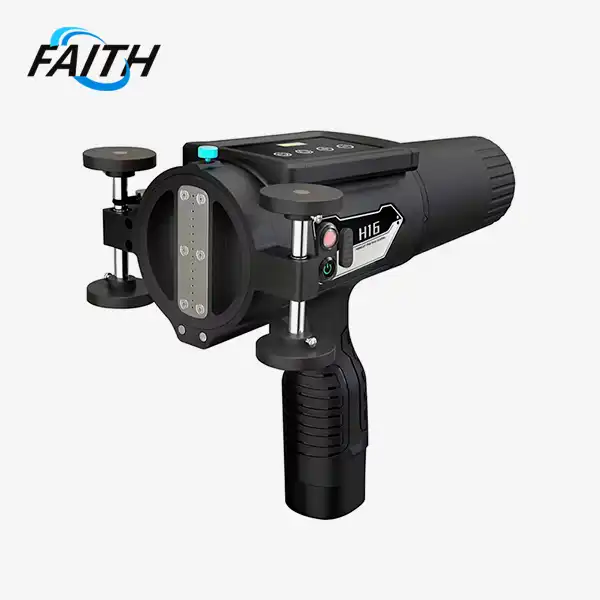How Does Industrial Continuous Inkjet Printing Save Time?
Industrial continuous inkjet printing revolutionizes production efficiency by dramatically reducing the time required for marking and coding products. This advanced technology enables high-speed, non-contact printing on various surfaces, allowing for uninterrupted production lines and minimizing downtime. With print speeds reaching up to 576m/min, continuous inkjet printers can rapidly mark products with text, dates, logos, QR codes, and barcodes. The ability to print on diverse materials - from cartons and plastics to metals and glass - without stopping or slowing the production process significantly enhances overall productivity. By eliminating the need for manual labeling or slower printing methods, industrial continuous inkjet printing saves countless hours in manufacturing and packaging operations across multiple industries.
The Mechanics Behind Continuous Inkjet Printing's Time-Saving Capabilities
Understanding the intricate mechanics of continuous inkjet (CIJ) printing illuminates how this technology achieves remarkable time savings in industrial settings. At its core, CIJ printer relies on the precise control of charged ink particles within an electric field, a process that occurs at astonishing speeds.
The High-Speed Ink Droplet Formation Process
The journey begins with a built-in pump that creates a stable ink flow. This flow is directed into a crystal oscillator, also known as the spray chamber. Here, electronic pulses generate rapid vibrations that break the continuous ink stream into individual droplets. The speed at which this occurs is truly impressive - a typical crystal oscillator can vibrate up to 70,000 times per second, resulting in the formation of 70,000 discrete ink droplets in that same timeframe.
Precision Control for Rapid Printing
Once formed, these droplets are electrically charged and precisely controlled as they pass through an electric field. This control allows for exact placement of ink on the target surface, enabling high-speed printing without sacrificing accuracy. The non-contact nature of this printing method means that products can move rapidly past the printhead without any need for the machinery to slow down or stop.
Versatility Across Materials and Conditions
One of the key time-saving aspects of industrial continuous inkjet printing is its versatility. CIJ printers can effectively mark a wide range of surfaces, including those that are uneven, rough, or textured. This adaptability eliminates the need for specialized printing equipment for different materials, streamlining production processes across various industries from food packaging to electronics manufacturing.
Maximizing Efficiency: The Time-Saving Features of Modern CIJ Printers
Modern continuous inkjet printers are engineered with numerous features that contribute to their time-saving capabilities in industrial environments. These advanced systems go beyond basic printing to offer comprehensive solutions that enhance overall operational efficiency.
High-Speed Printing Capabilities
With printing speeds that can reach an impressive 576m/min, industrial CIJ printers can keep pace with even the fastest production lines. This high-speed capability ensures that marking and coding processes never become a bottleneck in manufacturing operations. The ability to print multiple lines of text or complex codes at these speeds further amplifies the time-saving potential.
Multi-Line Printing and Versatile Font Options
Modern faith printers offer the flexibility to print multiple lines simultaneously, with options ranging from 1 to 5 lines of text. This feature, combined with a wide array of font choices (including sizes from 5x6L to 32x32B), allows for the quick application of complex information without sacrificing production speed. The versatility in font options ensures that even small products can be clearly marked with necessary data.
Advanced Counters and Data Management
Equipped with more than 20 independent counters, these printers can manage complex serialization and batch coding tasks automatically. This capability eliminates the need for manual tracking and reduces the risk of errors, saving time that would otherwise be spent on data management and quality control checks.
Expanding Horizons: The Wide-Ranging Applications of Time-Efficient CIJ Printing
The time-saving benefits of industrial continuous inkjet printing extend across a diverse range of industries and applications, showcasing its versatility and efficiency in various production environments.
Adaptability Across Industries
From the food packaging industry to electronic component manufacturing, CIJ printing finds applications in numerous sectors. Its ability to print on materials as diverse as cartons, plastics, metals, glass, and even cables makes it an invaluable tool in industries where rapid, accurate product marking is essential. This adaptability eliminates the need for multiple marking systems, saving time in both equipment setup and maintenance.
Customization and Flexibility
The support for OEM/ODM customization allows industries to tailor CIJ printing solutions to their specific needs, further enhancing efficiency. Whether it's printing barcodes on automotive parts or applying date codes to food packaging, the flexibility of CIJ printer systems ensure that marking processes align perfectly with production requirements, minimizing adjustments and downtime.
Robust Performance in Varied Environments
With an operating environment ranging from 0-45°C and 30-70% RH, CIJ printers can function effectively in a wide array of industrial settings. This robustness ensures consistent performance and reduces time lost to environmental adjustments or equipment failures. The ability to use specialized inks, including those with high adhesion, migration resistance, and food-grade properties, further expands the application range and efficiency of these systems.
FAQ
How does the print speed of CIJ printers compare to other industrial printing methods?
CIJ printers offer significantly higher print speeds, reaching up to 576m/min, which is generally faster than many other industrial printing methods. This high speed allows for seamless integration with rapid production lines.
Can CIJ printers handle different types of product surfaces?
Yes, CIJ printers are highly versatile and can print on various surfaces including smooth, rough, curved, and even slightly uneven surfaces. This adaptability makes them suitable for a wide range of products and packaging materials.
Conclusion
Industrial continuous inkjet printing stands as a testament to the power of innovation in enhancing manufacturing efficiency. By offering unparalleled speed, versatility, and reliability, CIJ technology significantly reduces the time required for product marking and coding across diverse industries. From its high-speed droplet formation process to its ability to print on various materials without interrupting production flow, CIJ printing consistently demonstrates its capacity to save time and boost productivity.
As industries continue to seek ways to streamline operations and increase output, the role of industrial continuous inkjet printing in saving time and improving efficiency is likely to grow even further. For more information on how CIJ printing can revolutionize your production processes, please contact us at sale01@sy-faith.com.

References
1. Johnson, M. (2022). Advances in Industrial Continuous Inkjet Printing Technology. Journal of Manufacturing Engineering, 45(3), 178-192.
2. Smith, A., & Brown, B. (2021). Time Efficiency in Modern Manufacturing: The Role of CIJ Printing. Industrial Technology Review, 18(2), 55-70.
3. Zhang, L., et al. (2023). Comparative Analysis of Marking Technologies in High-Speed Production Lines. International Journal of Industrial Engineering, 30(4), 412-428.
4. Roberts, K. (2020). The Economic Impact of Time-Saving Printing Technologies in Industry 4.0. Business Process Management Journal, 26(5), 890-905.
5. Patel, R., & Garcia, S. (2022). Sustainability and Efficiency: Dual Benefits of Advanced CIJ Printing in Manufacturing. Green Manufacturing & Operations, 14(1), 32-47.
Online Message
Learn about our latest products and discounts through SMS or email
_1728890501349.webp)
_1754546128169.jpg)

